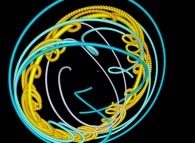![Click to download and possibly see the movie [Cliquez pour télécharger et voir éventuellement le film] Click to download and possibly see the movie [Cliquez pour télécharger et voir éventuellement le film]](image.jpg)
From Pluto to the Sun -extrapolation 2- (non linear scales) [De Pluton au Soleil -extrapolation 2- (échelles non linéaires)]
.
![Click to download and possibly see the movie [Cliquez pour télécharger et voir éventuellement le film] Click to download and possibly see the movie [Cliquez pour télécharger et voir éventuellement le film]](image.jpg)
From Pluto to the Sun -extrapolation 2- (non linear scales) [De Pluton au Soleil -extrapolation 2- (échelles non linéaires)]
.==>

==>

==>

==>
